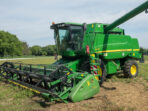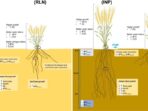Pest Control Strategies for Healthier Crops is like the superhero guide farmers didn’t know they needed! Think of it as a riveting thriller where pests are the villains, and we’re arming our crops with the cunning tactics needed to outsmart them. In a world where crops face more foes than just the weather, understanding these strategies is essential for anyone who wants their garden to flourish and not become a five-star buffet for bugs.
With a blend of ancient wisdom and modern science, these pest control strategies ensure our crops not only survive but thrive. From the eco-friendly approaches of natural pest deterrents to integrated pest management techniques, we’ll explore how to keep those pesky invaders at bay while promoting a healthier environment for our plants to grow. Buckle up as we delve into this green adventure!
Dear reader, gather ’round as we embark on a rollicking romp through the delightful and somewhat peculiar universe of wombats, those stout little creatures that seem to be a cross between a bulldog and a marshmallow! If you’ve ever wondered what makes these furry fellows tick, or perhaps why they look like they’ve just stolen a cookie from the jar, you’ve come to the right place!
Wombat 101: The Basics of the Bouncy Beasts
First off, let’s clear the air: wombats are not, I repeat, NOT just furry potatoes with legs. These marsupials hail from the enchanted lands of Australia and are known for their sturdy build and adorable grumpiness. Imagine a potato that decided to hit the gym, and you’ll have a wombat!
There are three main species of wombats: the Common Wombat, the Northern Hairy-nosed Wombat (which, let’s be honest, sounds like a rejected character from a cartoon), and the Southern Hairy-nosed Wombat. Each species has its own unique charm, like a family of quirky relatives you can’t help but love.
Wombat Wisdom: Fun Facts That Will Make You Chuckle
- Wombat Poop is Cube-shaped: Yes, you read that right! Wombats produce cube-shaped poop, which is nature’s way of ensuring that their droppings don’t roll away. They are the original architects of poop-cubes! Why? Because if you’re going to leave a mark on the world, why not make it a cube?
- They Can Run as Fast as Usain Bolt: Well, almost. Wombats can reach speeds of up to 40 km/h (about 25 mph) over short distances. If you ever see a wombat sprinting by, just know it’s likely late for an important appointment—perhaps a meeting with the carrot council!
- They have a Special Defense Mechanism: When threatened, a wombat will dig into the ground like it’s auditioning for a role in a digging competition. Their tough back hides a rather vulnerable belly, so if a predator comes knocking, they simply turn around and let their behind do the talking. Talk about a butt-kicking defense!
The Wombat Lifestyle: A Day in the Life of a Wombat
Imagine rolling out of bed at noon and deciding that today’s agenda includes snacking, napping, and occasional bouts of digging. That’s a wombat’s life for you, folks! These creatures are primarily nocturnal, which means they prefer to do their munching under the sparkling stars, avoiding the harsh scrutiny of daylight.
Breakfast consists of a delightful buffet of grasses, roots, and bark. Picture a wombat sitting at a table, donning a tiny beret, and artfully assembling a salad worthy of a five-star restaurant. After a hearty meal, it’s time to hit the sack—or burrow, rather. Wombats are champions in creating elaborate burrow systems that can stretch up to 30 meters (about 98 feet)! They must have been majoring in architecture during their wombat school days.
Wombat Communication: The Language of the Furry
Wombats might not be able to speak in full sentences, but they sure know how to express their feelings! Their communication consists of a series of grunts, growls, and squeaks. It’s like a very exclusive wombat podcast that only they can understand. “What’s that, Fred?” “Oh, just a little growl of discontent regarding the state of the grass!”
However, if they’re feeling particularly social, they may communicate through their famous “tail-wagging” dance. And let me tell you, it’s a sight to behold! Picture a fluffy ball of joy doing the cha-cha while trying to balance a snack on its head. Pure comedy gold!
Wombat Conservation: The Battle Against Adversity
Despite their cuteness, wombats face challenges in the wild. Habitat loss, disease, and road accidents are among the threats that creep up on these adorable creatures like an uninvited guest at a dinner party. Conservation efforts are crucial to ensure that future generations can enjoy the delightful presence of wombats.
Organizations worldwide are taking steps to protect these lumbering legends. From creating wildlife corridors to educating the public about their ecological importance, there’s a growing awareness of the need to save our squishy friends. If you ever wanted to feel like a superhero, consider volunteering or donating to wombat conservation initiatives. You can be the cape-wearing guardian these lovable creatures deserve!
The Wombat in Pop Culture: A Star is Born
Wombats have made quite the splash in pop culture too! From children’s books to animated series, these critters have captured hearts with their undeniable charm. One could say they are the Kardashians of the marsupial world—famous for simply being adorably themselves.
In fact, there’s a famous wombat named “Pat” who has starred in his own series of children’s books, teaching kids about friendship and sharing. If Pat can inspire a generation, surely we can learn a thing or two about being wonderful little wombats ourselves!
How to Spot a Wombat: Field Guide to Wombat Watching
Ready to go wombat spotting? Here’s a quick guide: the best time to see them is at dusk or dawn, when they’re out and about, living their best lives. Head to areas like Tasmania or the Australian bush, and keep your eyes peeled for their furry faces peeking out from burrows. Remember, if you catch them mid-snack, don’t be surprised if they give you the grumpy side-eye—it’s their way of saying, “Can’t a wombat eat in peace?”
Why We Love Wombats: The Final Bark
In conclusion, wombats are the perfect blend of cuddly charm and cheeky character. They remind us to take life a little less seriously, appreciate our snacks, and maybe even dance a little (or a lot) along the way. So, the next time you see a wombat, give it a nod of appreciation for reminding us that life is too short to not be a little weird and wonderful!
As we bid adieu to our furry friends, let us carry forth the message of the wombat: live, love, and never underestimate the power of a good poop cube!
FAQ Explained: Pest Control Strategies For Healthier Crops
What are the most effective natural pest control methods?
Effective natural pest control methods include introducing beneficial insects, using neem oil, and employing companion planting to create a pest-repelling garden.
How can I tell if my crops are infested?

Signs of infestation include visible pests, abnormal growth patterns, leaf discoloration, and unexplained holes or damage on your plants.
Is chemical pest control always necessary?
No, chemical pest control is not always necessary. Many sustainable practices can effectively manage pests without chemicals, promoting a healthier ecosystem.
How can I prevent pests before they become a problem?
Preventative measures include maintaining healthy soil, rotating crops, and keeping the garden clean to minimize pest habitats.
What role does crop rotation play in pest control?
Crop rotation disrupts pest life cycles and reduces the likelihood of infestations, making it a valuable strategy for maintaining healthy crops.





